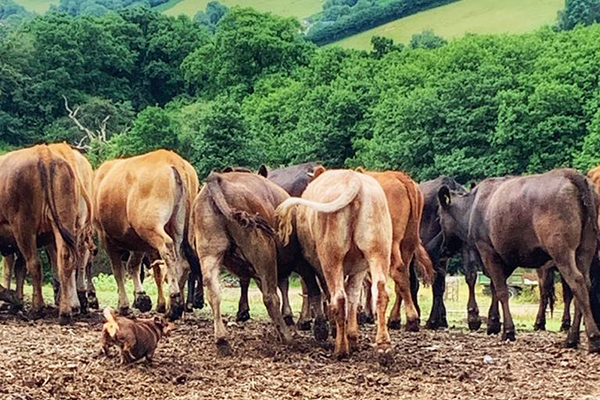Lancashire Heelers United offers comprehensive education, advice, history, and resources related to Lancashire Heelers, a landrace breed of small herding dogs from the north west of England. After nearly disappearing, the breed has come back from the brink and is now recogized by kennel clubs around the world.
Rescuing a breed is to make an indelible mark on the landscape of tomorrow.


Herding or Working?
by Dick Koster
Every now and then the question arises whether the Lancashire Heeler belongs in the Herding group or in the Working group. Let us take the historical perspective to answer this question.
The history of the Lancashire Heeler goes back a long way, this type of dog was already described in the 19th century. I deliberately say type because at that time people did not yet think in terms of breeds. The principle was “appearance follows function”. And the function was to drive cattle from the English and Scottish ports over the roads to the markets and slaughterhouses. These were often great distances, where the herds also had to be driven through narrow streets. That is partly why they had to be small. Endurance was essential to bring the long journeys to a successful conclusion. Another essential characteristic was (and is) fearlessness: because what can you say as a dog of about 8 kilos (18 pounds) against a cattle of 500-800 kilos (1,100-1800 pounds)? Well, everything.
Based on this historical point of view the classification in the Herding group is correct. The question is whether that instinct is still present. The answer to this is a resounding yes. It can happen however, that a Heeler has its own agenda that does not completely match that of the boss. For convenience I will call the type of drovers Lancashire Heelers from here on.
But with the construction of railways, transporting cattle by rail became the standard. With that, the primary function of the Lancashire Heeler disappeared. The Heelers found shelter on farms where they quickly developed into valuable ratters. They also announced visitors loudly. In addition, they had, and still have, a high intelligence with which they master all kinds of tricks. The breed is so versatile that they can participate in many dog sports, if not all of them. Agility, tracking, flyball, nosework, barn hunt, you name it, they do it. They love to do things, preferably with others, both people and dogs. However, the fact that they like to work so much, does not make them a “working dog”. Just like ratting does not make them a terrier or tracking does not make them a hound. In short: the Lancashire Heeler is completely rightly classified in the Herding group. After all, it is originally a drover par excellence.
Learn More
Herding vs. Trialing
History and Today
- Early days
- Urban herding dogs need physical and mental outlets
- Herding competition
- Resources
Lorem Ipsum
Ut enim ad minim
- Consectetur adipiscing elit
- Sed do eiusmod tempor incididunt ut labore et dolore magna aliqua
- Nostrud exercitation ullamco laboris
- Excepteur sint occaecat cupidatat non proident
- Duis aute irure dolor in reprehenderit
Semper in Lectus
Ante consequat tellus
- Duis aute irure dolor in reprehenderit
- Sunt in culpa qui officia deserunt mollit anim id est laborum.
- Primis etiam tempus commodo condimentum inceptos dis fermentum
- Vel dictum tincidunt felis lacinia scelerisque laoreet mattis ultricies
